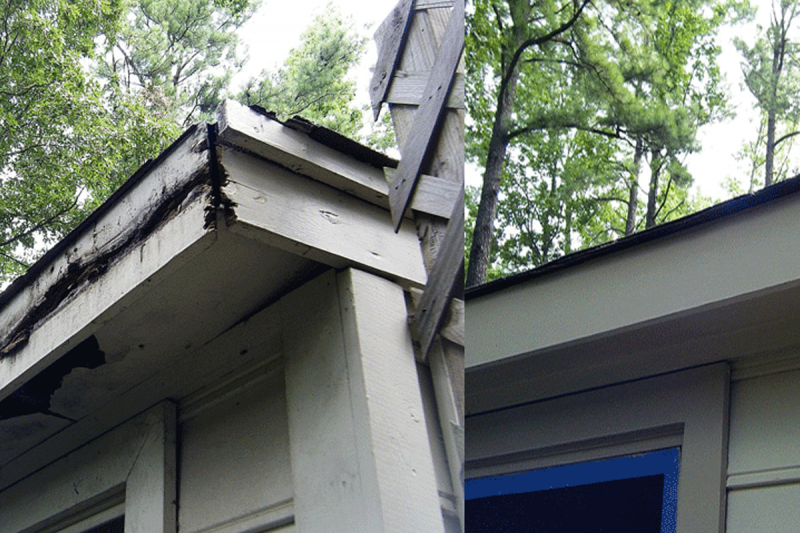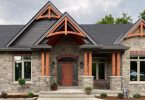How to check for problem before you start a reno.
Tackling a home renovation is an exciting venture. However, to ensure the project maintains your timeline and follows budget, take the time to scope out any problem areas prior to beginning your renovation.
Here are a few tips and suggestions designed to assist in determining common problem areas, allowing you to go forth and conquer a smooth and well planned renovation endeavor.
Dry Rot May Be Lurking
Rain, insects and wind are among the most common structural hazards Mother Nature throws at us. These angry elements also play havoc with any renovation projects, especially if not taken care of beforehand. Dry rot can be found where there is any type of material susceptible to humid and warm conditions. Heed the following suggestions to ensure your reno is a success, even before you begin it.

Be sure to give the original structure a thorough inspection for any sign of dry rot which can be found on windows, doorways, under floors and on walls plus any wooden framing.
Experts suggest leaving at least one or two inches for the replacement plug which can either be stone or wood. If you choose to use wood for the replacement, Red Cedar or Mahogany are your best choices as they are both insect and rot resistant. It is always a good idea to spray a quality fungicide to the area as a preventative measure. Next, use a marine epoxy as an adhesive to connect the replacement with the original healthy wood. Avoid using polyester based Bondo, as it does not have the necessary components to maintain a long term adhesive. Finally, sand the surface smooth before applying a primer.
A piece of stone is also another option to replace the section of dry rot. Again, ensure an extra one to two inches are removed to allow for the stone to adhere properly to the healthy wood.
Prior to taking on any of the above steps, consider if the original wood is worth saving. It may be a better option just to replace the whole thing. Further, consider the source of the dry rot. A leaky eaves-trough, condensation or excessive humidity will continue to cause problems.
Leaky Roof
Another suggestion is to do a thorough investigation of the roof. Most repairs to a roof are quite easy and not very time consuming. If you notice any of the following signs, then it will be worth adding “roof repair” to your pre project To Do list.
Sagging Roof
How to check for problems before you start a reno: the roof
Pull a Chevy Chase in Christmas Vacation, and head on up to the attic. Instead of watching old home movies, take a close look at the rafters, joists and decking. Should you notice any sagging, there is a good chance moisture is somehow getting into your home via the roof. If you do notice sagging, contact a reputable roofing contractor and have them do a thorough inspection. Most important attention should be paid to all of the decking, shingles and flashing to find the source of the moisture.. Once the culprit is located, the contractor may only have to plug it with a good quality roof sealant.
Damage to the Interior
If you are noticing water stains on walls or bubbling paint, that indicates a sure sign there is definitely water leaking into your home from the roof. Do not simply replace drywall and re-paint. Get to the source of the problem – a leaky roof, and repair it.
Let There Be Light
But not in the attic. If light is beaming down in a heavenly way through the roof of your attic, contrary to popular belief, it is not a good sign from above. Anything as small as a pinhole can lead to a major roofing headache. Usually cracked or curled shingles are the culprit and fortunately, they can be easily replaced or repaired with a quality sealant. As a preventative measure, it is always a good idea to visit your attic a few times a year to check for holes or cracks. Deterrence is the best defense against what could be a costly and time consuming future repair job.
Will your Renovation require an Amp Box Upgrade

Depending on the type of renovation you are undertaking, an electrical service panel upgrade may be necessary. Things to consider include current wiring issues, the installation of new appliances or any other demands for increased hydro usage. If you do plan to upgrade the electrical panel, contact a licensed professional electrician for an assessment and suggestions. Planning ahead for your electrical requirements can save you future problems and safety issues.
Flood Water Damage in Basement
Another problem area to check before you reno: the basement. Just like your roof and wooden structures above the home, water damage in a basement is also a serious problem. Whether the cause is due to a natural disaster or a burst pipe, water damage in a basement is a priority repair. Dependent on the type of damage, the time allocated for repair can vary. If water seepage is due to cracked concrete, patching may be a sufficient solution. However, a complete flood will require floor replacement and repair, mold prevention and sterilization should the moisture damage result from a sewer back up. The repair process can also include replacing drywall and interior finishes, repairing a weakened foundation and replacing bad pipes.
A thorough inspection of your basement is highly suggested before engaging in any type of renovation project.
Cracking Foundation Warning Signs
It is highly recommended to ensure the structure you are working on has a secure and solid foundation. Some of the most prominent signs of a failing foundation include a door jamming or failing to latch, cracks in walls, difficulty closing or opening windows and space between flooring and a basement wall. Repairing a crack in a foundation involves misting the crack with water from a spray bottle then inserting a hydraulic cement mixture into the crack with a putty knife. Once dry, add another layer. Use a trowel to ensure the cement patch is level and smooth with the wall surface.
Check for problem areas before you start a reno: Mold
Mold is a nasty substance that plays havoc with our health. Respiratory distress, allergic reactions and other major illnesses are often due to a mold infestation in a home. It can also lead to serious property damage. Two major reasons to not take mold lightly.
Mold likes to hide. It’s a sneaky foe that prefers dark and humid locations that aren’t always visible. In fact, mold spores are microscopic in size, resulting in the benefit of hiring a licensed Mold Inspection & Testing Service. They have the equipment and expertise necessary to locate and eradicate mold. The Bathroom is a common place for mold. A warm and moist environment is party central for spores and their friends. Throw in a improperly vented bathroom and the advancement of mold is a guarantee. Inspect shower tiles, the sink and faucets.
A hot bleach solution can kill mold spores but keep in mind that the cause of the mold must be remedied, or it will simply return.
The kitchen and attic are also hot spots for the growth of mold spores. Something as simple as a piece of food falling behind the counter in the kitchen, to the warm and humid conditions of your attic in the summer, can trigger mold.
If you do find mold in your home, contact a licensed mold tester. They will determine the type of mold and the options to remove it. Further, your insurance company may provide coverage for mold removal. It’s a good idea to speak with your Insurance Representative to discuss your choices.
Always inspect and remove mold from any structure prior to initiating a renovation project. It will save a lot of money and major problems in the long run.
If you check for problems before you start a reno, you will save yourself a lot of money and headaches! – Text by Cora Lee
Check out some more great reno advice here
Latest posts by Canadian Home Trends (see all)
- Dining Room Design Tips - July 13, 2025
- Practical Luxury in Forest Grove - July 13, 2025
- The Hidden Value of Great Design - July 13, 2025







